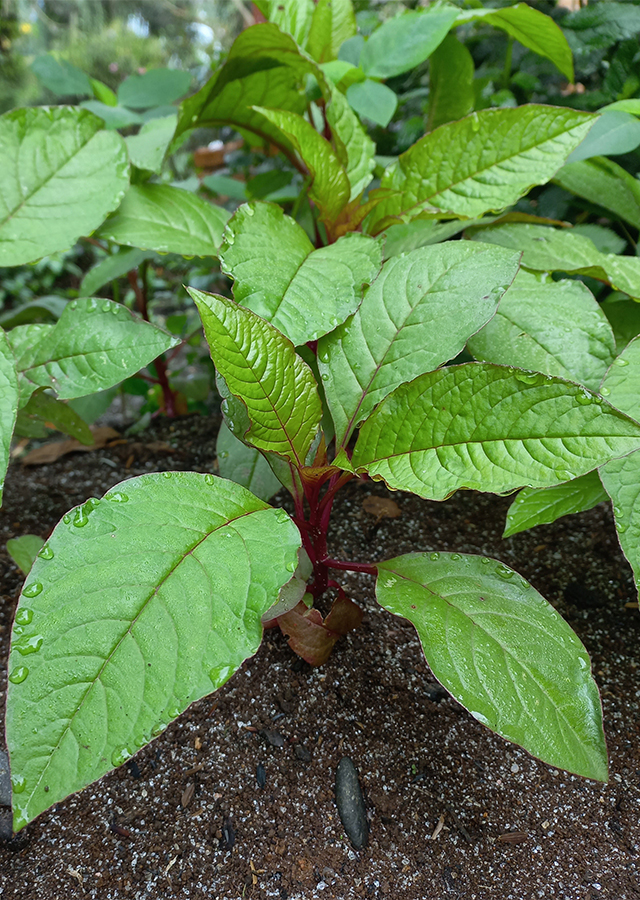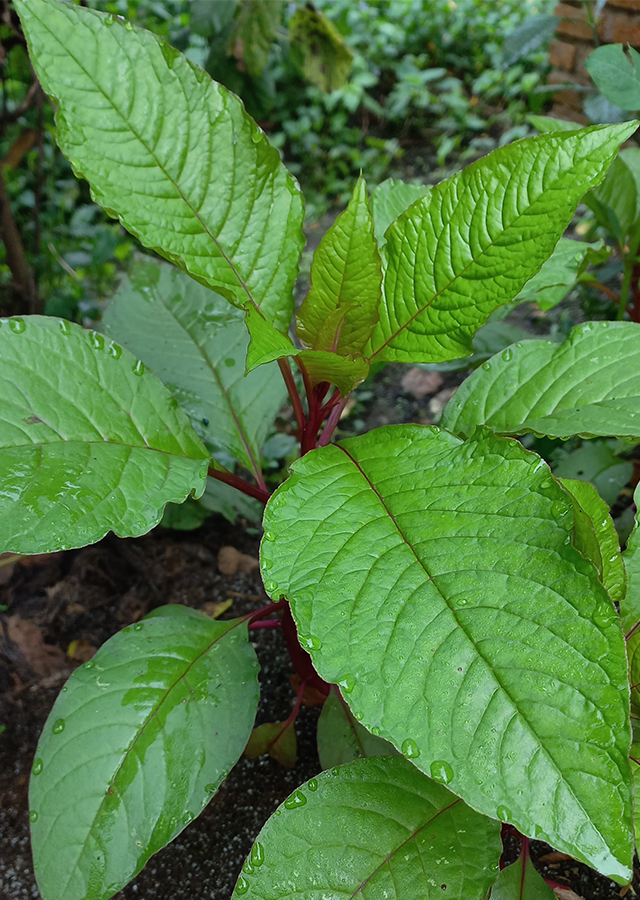Traditional Herbs from Phytolacca americana
overcoming_itchy_itching
- Prepare enough leaves then wash them with running water until clean.
- Crush the leaves until they become a paste.
- Apply the leaf paste on the itchy skin.
laxative
- Take fresh leaves wash thoroughly with running water.
- Boil the leaves until boiling.
- Strain the boiled product.
- Drink while warm.
What is Phytolacca americana Looks like??



Parts of Phytolacca americana that could be used
- Leaves
- Fruits
- Roots
Phytolacca americana Distribution
Ink amaranth is native to eastern North America and Mexico and has been introduced to Europe, Africa, and Asia. All parts of this plant are poisonous, especially poisonous to children. It has been reported that the plant is safe when young and that its toxicity develops as the plant ages. The sap is sharp and can cause skin irritation. This plant can be grown as an ornamental plant, and is cultivated as a dye plant that produces a red color, and is used as ink, dye, and coloring agent in wine and food. In small quantities, the young shoots can be consumed by cooking and changing the boiled water repeatedly to remove the poison, and are usually consumed like spinach. Ink spinach has a long history of use as a medicine that is traditionally used in the treatment of diseases related to a compromised immune system. This plant, especially the roots, is widely used in medicine in Indo-China to treat various diseases. Native Americans also used this plant to stimulate intestinal cleansing (laxative) and emetic (emetic). In addition, the cut parts of the roots boiled in water can be used as a substitute for soap.Agroecology of Phytolacca americana
Ink spinach can be found living on roadsides, disturbed areas, forest edges, river banks, grasslands, land clearings, bushes, and forest borders from sea level to 1,400 m above sea level. This plant likes light (sandy), medium (loam) and heavy (loam) soil textures and is able to grow in areas with partial or no shade, but can grow well under trees. Ink amaranth also requires humus-rich, moist, acidic soil and is tolerant of short periods of drought.
Morphology of Phytolacca americana
- The taproot is fleshy, poisonous.
- Stems are cylindrical, branched, glabrous. Young stems are soft, contain water, old stems are reddish and slightly hard.
- Single leaves, lanceolate-elliptical or ovate, alternate. alternate, pointed leaf tip, leaf base pointed and narrow, pinnate spines, poisonous.
- Bisexual flowers, small, numerous, white to green, has 5 colored corollas whitish to pink, has no petals, 10 stamens with pollen stalks that are longer than the pistil, flowers are arranged in panicles (racemes).
- Berries, round and flat, green in color young and becomes shiny dark purple when ripe, watery, poisonous.
- Seeds are round, laterally flat, 3-4 mm long, numerous, shiny black, skin smooth and hard.
Cultivation of Phytolacca americana
- Propagation can be done generatively (seeds) and vegetatively (stem cuttings).
- Before sowing, the fruit must be soaked in water for 48 hours to allow extraction of the seeds.
- Mass propagation is done by non-woody stem cuttings. After 6-8 weeks the cuttings take root and can be planted in the field, with a spacing of 1-3 m \u00d7 2-3 m.
Phytolacca americana, more details :
Chemical Content of Phytolacca americanaSaponins (phytolaccosides B, E, and esculentosides), sterols, alpha-spinasterol, americanins A, B, D11, 12, americanol A, isoamericanol A13, methyl esters, lectins, phytolaccanin, phytolaccatoxin, triterpenes, histamine, γ-aminobutyric acid, phytolaccagenin, phytolaccagenic acid, oleanolic acid, tannin, caryophyllene, jaligonic acid.
Benefits of Phytolacca americana
Treating auto-immune diseases (especially rheumatoid arthritis), tonsillitis, goiter, glandular fever and other complaints involving swollen glands, chronic catarrh, bronchitis, bruises, swelling and sprains, cancer, hemorrhoids, tremors, rheumatism, dysentery, warts, boils, acne, scabies, itching, menstrual pain, goiter, skin cancer, AIDS, cures smallpox in children, is anodyne (relieves sensation pain), anti-inflammatory, cathartic (emotional release), expectorant, hypnotic, laxative, emetic (drug that causes vomiting).
Simplisia of Phytolacca americana
Another Facts for Phytolacca americana :
Synonym of Phytolacca americanaPhytolacca americana var. lancifolia H.Walter, Phytolacca decandra L., Phytolacca vulgaris Crantz
Habitus of Phytolacca americana
Herb. Annual herb, up to 3 m high
Habitat of Phytolacca americana
- Riverside", "Forest", "Roadside", "Grassland", "Land
No comments:
Post a Comment